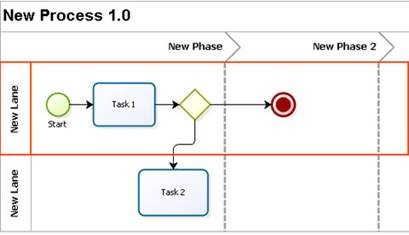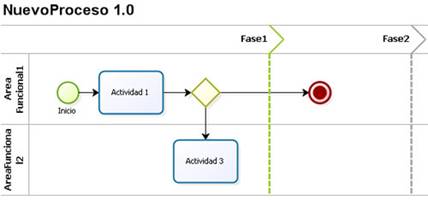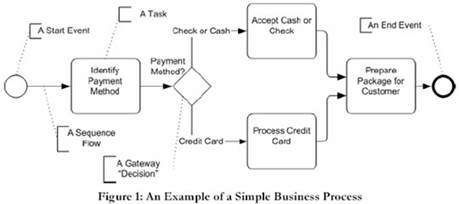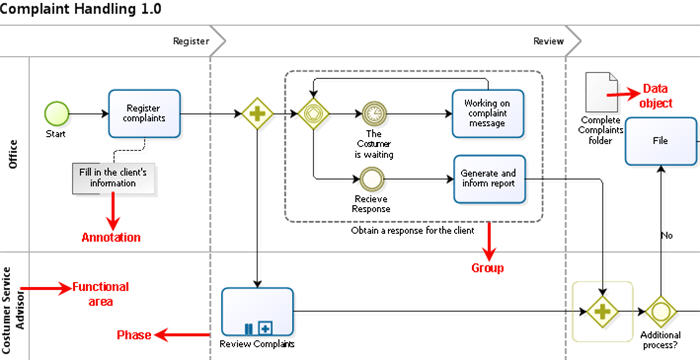Artifacts, swimlanes and Connecting Objects
From Business Process Management, BPM and Workflow Automation Wiki | BizAgi BPMS
<keywords content="keywords">
swimlane, swimlanes, connect, connecting objects
</keywords>
Contents |
Connecting Objects
Sequence Flow
Definition: Sequence lines are used to show the order in which activities will be carried out in the process.
Representation: They are represented by an arrow indicating “from” and “to”.
Types: Types of sequence flow include:
|
TYPE OF FLOW |
ORIGINAL NAME |
DEFINITION |
NOTATION |
|
Normal Flow |
Normal Flow |
The normal line refers to the path of the flow between two shapes, and is not affected by conditions. The simplest use of this shape is a sequence between two activities. |
|
|
Conditional Flow |
Conditional Flow |
This flow has a condition assigned that defines whether or not the flow is used. It can be assigned to any shape in the process that requires to evaluate a condition in order to follow a certain path. |
|
|
Default Flow |
Default Flow |
For decisions bases on inclusive decisions or data, a type of path of the flow is that of “default” conditions. This type of transitions takes place only if all the other conditions are false at the same time. Once the “Else” condition has been assigned to the transition, the arrow will be displayed as illustrated in the drawing on the right.
|
|
Swimlanes
At certain times, it happens that an activity diagram expands along more than one entity or player. When this takes place, the activity diagram is broken down into swimlanes, where each lane represents the entity or player carrying out the activity.
The lanes are used as a mechanism to arrange the activities in separate display categories to illustrate the different people in charge.
Types: Two types are used in BPM: Functional Area and Phase.
Functional Area
Definition: Represents a participant in a process. It is also known as functional area.
Representation: Partition extending along the process horizontally.
Phase
Definition: A sub-partition within a pool, which will be extended over of the pool horizontally or vertically. In Bizagi, there are vertical lanes, also known as phases. The lanes are used to arrange and categorize activities.
Representation: Vertical line separating the different states within the process.
Artifacts
Artifacts are graphical object that provides supporting information about the Process or elements within the Process. However, they do not directly affect the flow of the Process.
An Artifact MUST NOT be a target for Sequence Flow.
Groups
Definition: Used to group together a set of activities, whether for the effects of documentation or analysis, however, it does not affect the flow sequence.
Representation: Rounded rectangle drawn with a dashed line.
Annotations
Definition: Mechanisms for a modeler to be able to provide additional information in a BPMN diagram.
Representation: Box to include the information.
Data Object
Definition: Provide information about how documents, data and other objects are used and updated during the process. Can be used to represent electronic and physical objects.
Representation: Document icon.
Examples of process diagrammed under the BPM standard:
<comments />




